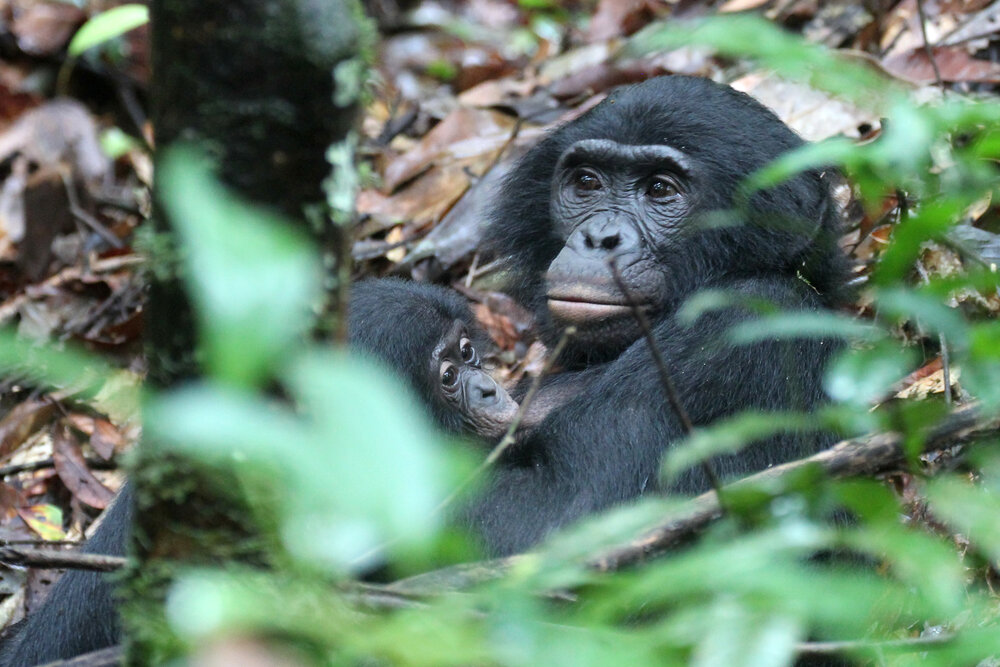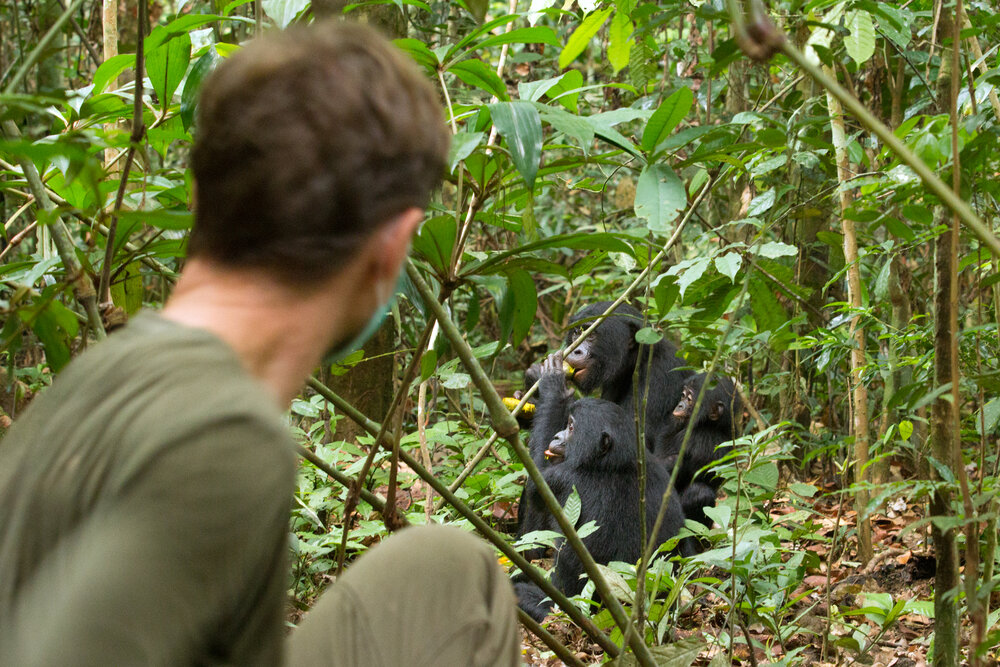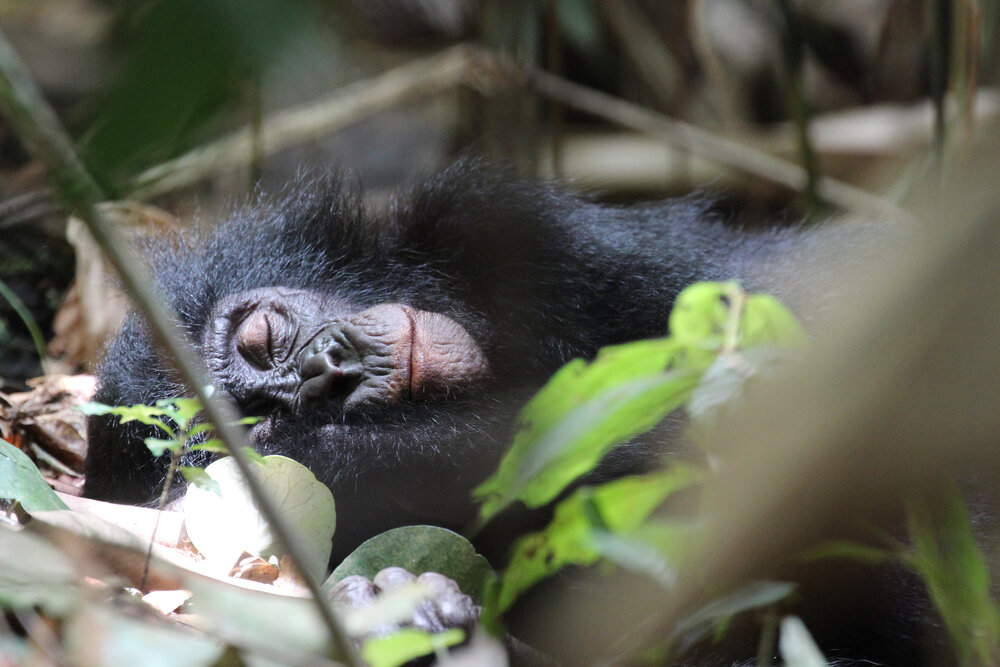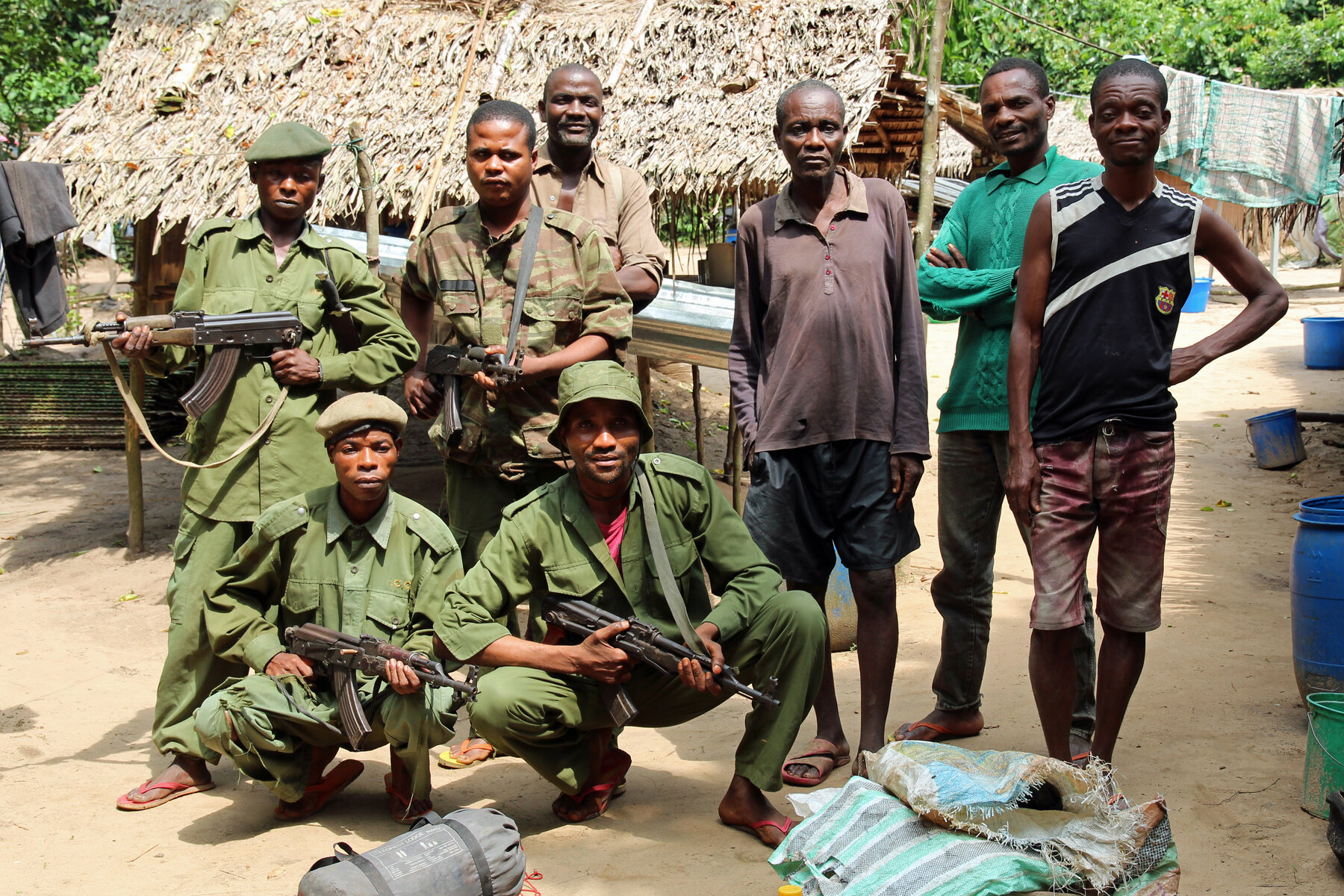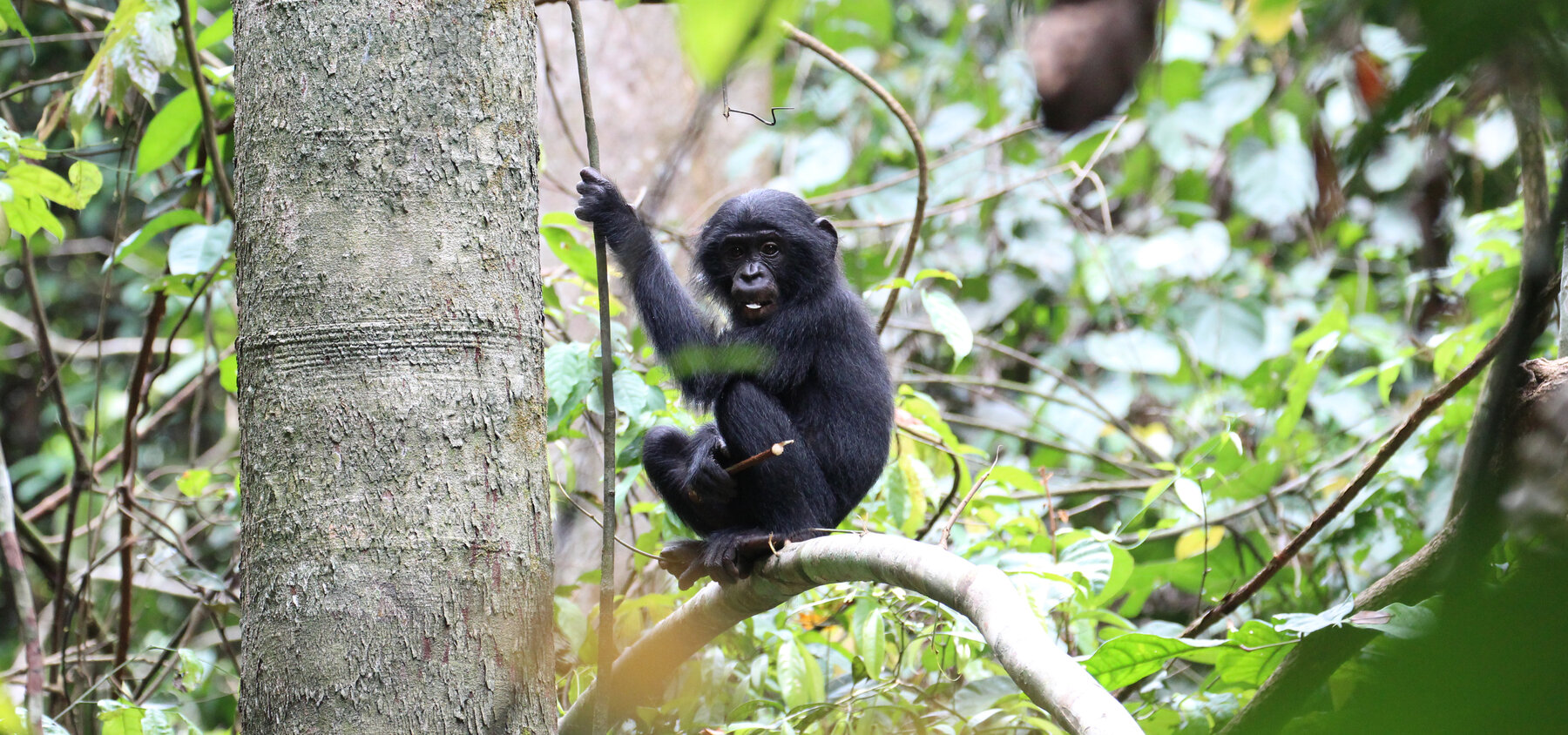
Bonobo
Zoo Berlin supports the bonobos in Salonga National Park in DR Congo.
Project facts
- Project name
Bonobo Alive e.V.
- Species
Bonobo (Pan paniscus)
- IUCN threatened status
Endangered (EN)
- Project location
Salonga National Park, Democratic Republic of the Congo (DR Congo)
- Greatest threat
Commercial poaching for the bushmeat trade
- Response
Deploying anti-poaching units to patrol the park and remove illegal animal traps; raising public concern for the rainforest
Threat Categories of IUCN


Bonobos at Zoo Berlin
Zoo Berlin has been home to bonobos since 1987. Keeper Ruben Gralki is particularly committed to protecting these endangered apes – which, alongside chimpanzees, are our closest living relatives. Ruben has been a member of the association Bonobo Alive for many years. In 2015, he paid a visit to the project’s headquarters in Salonga National Park, DR Congo, to see Bonobos in their natural habitat and witness the work of Bonobo Alive first hand. He was impressed by the successful local initiatives and has been in regular contact with members of the organisation ever since.
Protecting bonobos in Congo
Bonobos are an endangered species in their natural habitat in DR Congo. Bonobo Alive was founded by scientists and conservationists who are committed to safeguarding the future of these extraordinary apes. To protect the rare animals, Bonobo Alive sends out anti-poaching units that drive out poachers and remove illegal animal traps.
DR Congo – the bonobos’ only natural habitat
Wild bonobos are found solely in the Democratic Republic of the Congo. Conservation of the Congolese rainforests is therefore vital for their survival. There are four nature reserves within DR Congo that are home to a large number of bonobos. The most southerly of these is Salonga National Park, located in the Congo Basin in the middle of the country. This tropical rainforest was declared a national park in 1970, making it the first and therefore oldest protected reserve for bonobos. Covering an area of 36,000 km2, Salonga is also the largest tropical rainforest reserve in Africa and one of the largest worldwide.
Unexplored biological diversity in the remote Salonga National Park
Salonga National Park was registered a UNESCO World Heritage Site in 1984 and is also on the List of World Heritage in Danger. Due to its remote location, vast size and lack of accessibility, the national park is extremely difficult and expensive to patrol and protect. Salonga contains various types of vegetation and is home to a largely unexplored variety of plants and animals, many of which are under threat. The best-known species are the Congo peafowl, the African forest elephant, the bonobo, and the slender-snouted crocodile.
The threat from humans
The greatest threat to the survival of bonobos comes from poaching for the bushmeat trade. But it is not just apes that are under threat from humans – other large mammals such as elephants, sitatunga and African forest buffalo also fall prey to poachers. As bonobos have an extremely low reproduction rate, every animal killed presents a serious threat to the survival of the entire species.
No help from the law
When the dry season comes to an end, locals from the surrounding villages switch from fishing to hunting to meet their protein needs. But this does not constitute a real problem for bonobos; the most serious threat comes from commercial poaching carried out by organised groups, who often travel from other regions and are armed with automatic weapons and plenty of ammunition.Hunting protected species is an offence punishable by law in DR Congo, but the perpetrators are so rarely caught and sentenced that the law offers bonobos no real protection.
The valuable work of on-site anti-poaching units
Bonobo Alive has been working in this field for years, and has established a very effective method that brings together ICCN rangers (the DR Congo nature conservation authority) and the local population in the fight against poaching. But the task is not an easy one: to flush out poachers, the rangers must venture deep into very remote areas and drive them out from the inside. Despite the involvement of large conservation organisations, the poachers are rarely tracked down – and when they are, they have a variety of sources that usually warn them in advance.
Deterrence is key
The success of Bonobo Alive is largely reliant on the help of local people. The locals certainly don’t welcome heavily armed poachers taking over their forests, and are often eager to get involved in anti-poaching efforts. Rangers and local residents conduct regular patrols that concentrate on relatively small areas. They track down the poachers’ camps, drive them out of the area, and thus prevent them from hunting bonobos and other large mammals in the national park. Their efforts therefore help protect other threatened species besides bonobos that live within the national park.
The cost of the patrollers’ equipment, food and wages is covered by membership contributions and individual donations. Bonobo Alive also depends on the support of German zoos, including Zoo Berlin.
Raising local awareness
As well as implementing direct, short-term measures, Bonobo Alive has more long-term goals. Employees work tirelessly with local people to raise sympathy for the plight of the bonobo and encourage the protection of its habitat. They also teach nature conservation in local village schools. In these lessons, the much-loved bonobo serves as an ambassador for the preservation of the precious Congolese rainforests and their wealth of threatened biological diversity.
Photos: © Ruben Gralki/Zoo Berlin
